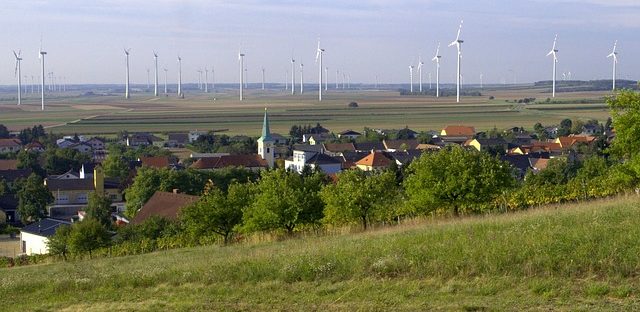- Target: 100% of its electricity from local, renewable sources by 2020
- Status: Achieved - Burgenland managed to supply 100% of its electricity needs through wind power by 2013.
- RES: Wind power and biomass energy.
- Implementation: Burgenland is the seventh largest of Austria's nine states. It borders the Austrian states of Styria and Lower Austria, as well as Hungary, Slovakia and Slovenia. Today, this region in eastern Austria gets 100% of its electricity from local, renewable sources . It all began in 1992, when a local citizen wanted to install a wind turbine on his property and contacts a wind power consultancy. The consultancy recommended to build a large farm in view of the site’s high wind power potential. In the following year, the owner and the consultancy presented the project to the Zurndorf town council. Between 1993 and 1995, planning and wind measurements were undertaken. In 1994, the municipality decided to create a company for managing the project (where the municipality has a 98% stake). By 1995, the membership of Austria to the European Union, meant that the Burgenland could benefit from EU Structural Funds to carry out infrastructure projects, such as energy. By 1997, the Austrian government decided to increase the share of renewable energy to 3% of final energy use, beginning with the construction of the Zurndorf wind farm. In 2001 the Austrian electricity market was open, and in 2002 Burgenland developed a regional wind power plan. In 2003 the Green Power Act was adopted. By 2009, the Burgenland Energieteam was established to set an energy self-sufficiency target by 2050, accompanied by an action plan. By 2013 self-sufficiency in electricity was already achieved. It is estimated that 4,500 jobs have been created through the development of wind power in Burgenland.
- Population: 284,900
- Area: 3,961.80 km2 (1,529.66 sq mi)
- Link: https://ec.europa.eu/regional_policy/archive/newsroom/pdf/200912_burgenland.pdf

- German
